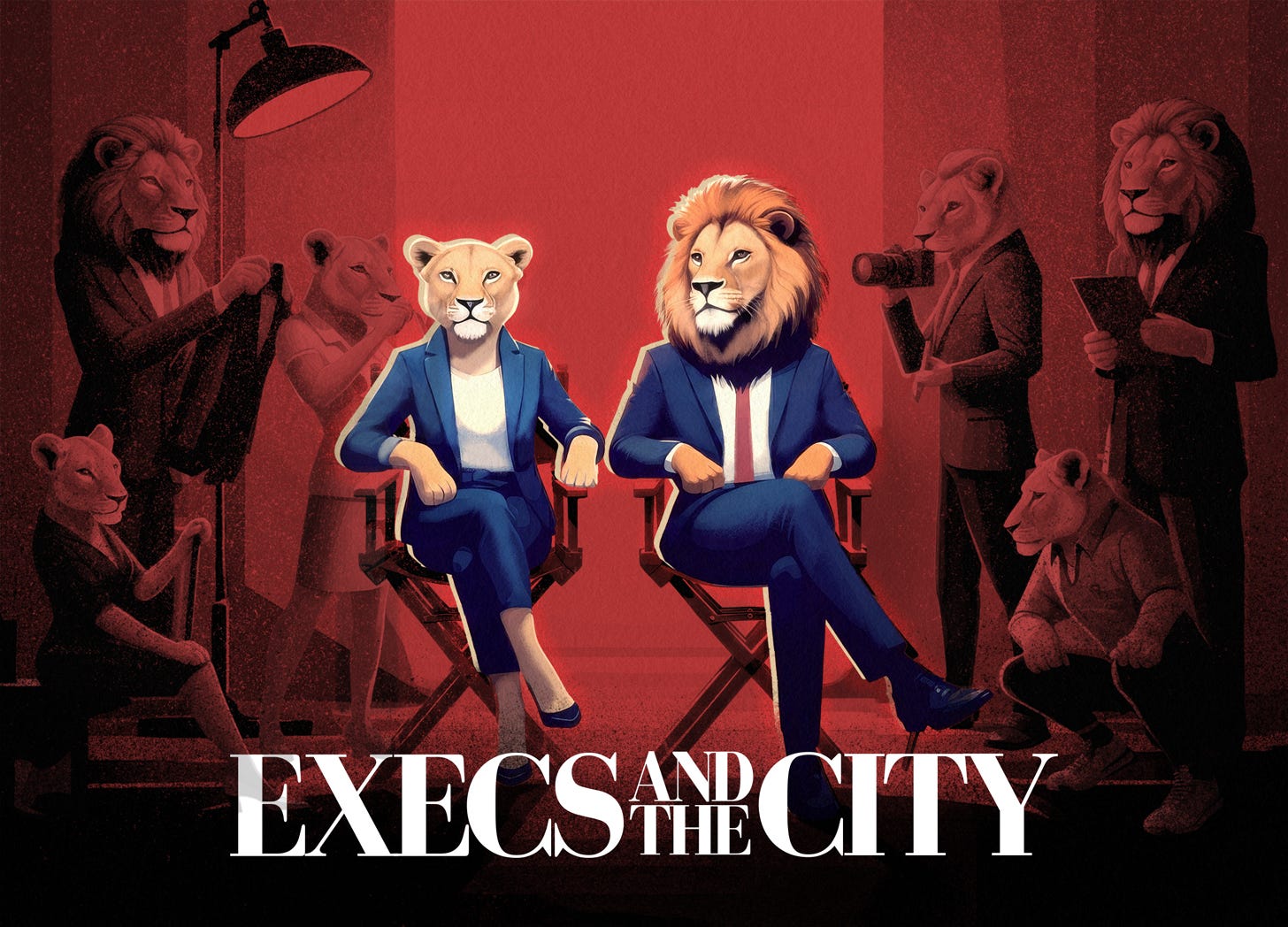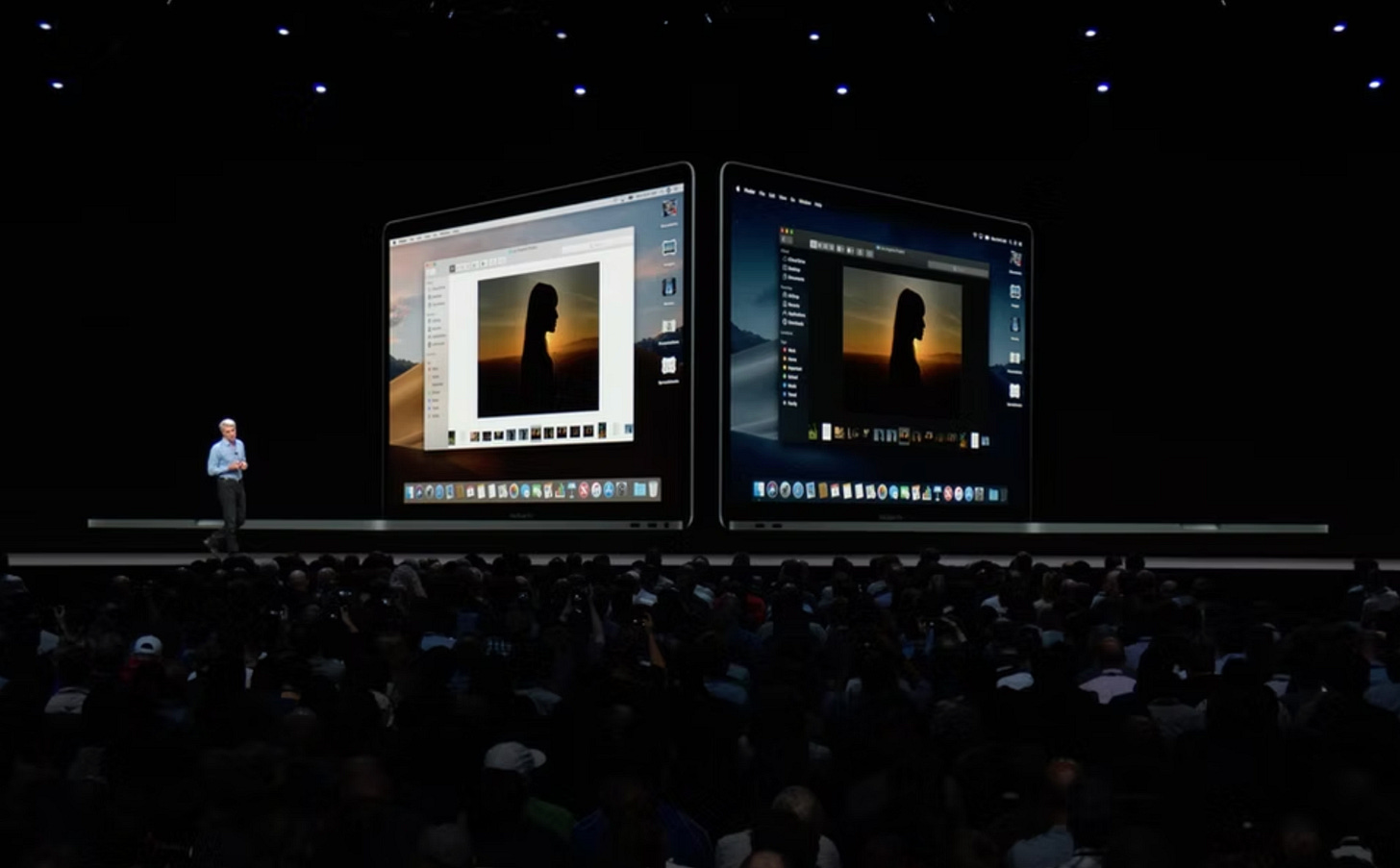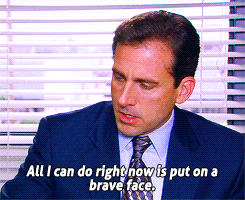Why Doing It All Yourself Is Killing Your Career
The hidden support systems top leaders use to preserve their best thinking—but most are too afraid to build.
While you grind yourself into dust to prove you can “do it all,” the most successful—and sustainable leadership careers—build invisible support systems that make their performance look effortless.
You and I both know that it’s anything but effortless.
Executive presence doesn’t require superhuman capability—but it sure looks like it sometimes.
Rather, it demands smart resource allocation that many leaders don’t admit they use or are too hesitant to invest in properly.
The science backs this up in telling detail.
Leaders make thousands of decisions daily—research suggests at least 122 informed decisions, plus hundreds more micro-choices you don’t even register.
Your brain depletes cognitive resources exactly like muscles exhaust after heavy lifting.
Stanford research proves this isn’t just “feeling tired”—it’s measurable cognitive degradation that destroys your judgment quality.
Yet we glorify the myth of the self-sufficient leader who never needs help.
Look at the contrast.
Struggling leaders wear burnout as a badge of honor and refuse to outsource anything.
Meanwhile, winning leaders delegate everything from inbox management to keynote design, personal training, stylists, headshot photographers, content strategists, and publicists.
The difference isn’t typically raw capability or work ethic or simply access to the funds once you reach impactful seniority. Rather, it’s more often your willingness to invest in the infrastructure that preserves your decision-making capacity for what matters most—including your family.
Here’s where you should pay attention.
Your toughest competitors don’t try to do more themselves. They build support behind the scenes that you don’t always see.
We’ve learned of some roles where all three finalists for a coveted senior leadership position at a unicorn company each invested over $50,000 personally in coaching—and that’s not considering the other support they invested in.
One of the candidates that got passed on considered a near 6 figure investment in an Ivy league accelerator program to correct their near miss.
After all, for them, every month they are unemployed, they’re losing over $200,000 in opportunity cost.
Holy smokes!
That’s the market we all navigate right now.
I’m not sharing this to make you feel inadequate if you can’t write those checks today.
I’m showing you what you’re actually up against so you can make informed decisions about your career trajectory.
Some of your competition operates with resources and infrastructure you don’t see.
Understanding this reality doesn’t mean you’ve lost—it means you can stop blaming yourself for feeling overwhelmed and start building the support you can afford right now, even if it’s just one hire that buys back five hours a week.
Every hour you spend proving you can handle administrative tasks is an hour they spend thinking three moves ahead.
Or an hour that they get 3-5x the impact from because someone is folding laundry, managing finances, running to the dry cleaners, and preparing their keynote all at the same time.
While you’re exhausted from scheduling conflicts and handling the kids’ laundry—they show up to meetings with full cognitive capacity.
The gap widens and compounds daily—and most leaders don’t even realize they’re running a race they’ve already lost. Yet here we are, continuing to push a large boulder up an increasingly steep hill.
Maybe it’s time for a fresh perspective.
I Had to Unlearn Everything About Money and Help
I learned about money and support systems the hard way.
I survived homelessness in my twenties, slept in skateparks and on disc golf courses, and operated in pure survival mode for years. I developed what psychologists call a “scarcity mindset.”
I had a toxic relationship with money that nearly destroyed my ability to build the career I have today.
I despised wealth.
Not the people who had it necessarily, but the concept itself. Especially because I didn’t grow up around it, my friends didn’t have it, and it didn’t appear there was a path to obtain it. I simply didn’t understand money at all.
So naturally, I villainized it.
And when you hold contempt for something, you sabotage your ability to negotiate for it—whether you deserve it or not. You shut it out of your world.
I climbed fast anyway.
At 19, I edited episodes of The Deadliest Catch (that won an Emmy) after a chance encounter in a Staples store with the producer. (That was unpaid work by the way, but it sure sounds cool.)
I bounced through short marketing stints and failed mostly upwards, except for a 6-month stretch of homelessness. By 24, I directed marketing at a Fortune 500 company. By 26, I held my first VP of Marketing role.
All without a college degree, because in 2008, the ROI didn’t pencil out when gas hit $5.50 a gallon and entry-level jobs paid $8 an hour.
Here’s what nobody tells you about that kind of rapid ascent—I built it by grinding myself into this self-loathing capitalist sacrifice and told myself it was for some sort of greater good.
In reality, I was just faking it until I was making it—or something poetic like that. Maybe you can relate to this while you were, “paying your dues.”
Eighty-hour weeks, sometimes pushing past 100 as CEO of Discover Podium a few years later. I proved “I can do it all myself” like it measured some kind of virtue.
I wore burnout as a badge of honor because if you didn’t feel exhausted, you weren’t working hard enough. (Thanks Dad.)
Asking for help felt like admitting I ran a fraud. My scarcity mindset actively blocked any thought of delegation.
Then something shifted, really in the last 24 months or so.
I started making real money—sometimes $10,000 for a single hour of counter-negotiation work with executives if our win was big time. My average hourly rate hit $2,500. And suddenly, the math became impossible to ignore.
If I billed an hour at $2,500, why did I spend that same hour doing laundry I could outsource for $50?
Am I scared of being perceived as an oligarch for passing that money through to someone else running their business? Something as simple as cleaning and folding laundry?
I’m not too good for cleaning my own underwear—am I?
Even if I made $200 an hour, shouldn’t I hire someone to handle my laundry for an hour, sell one more hour of consulting, then spend 2 hours with my family for dinner?
That’s putting your money to meaningful work.
The resistance wasn’t logical—it was psychological.
Years of scarcity thinking made delegation feel like weakness. Like self-indulgence. Like I was becoming one of those people I used to resent.
But here’s what changed everything—I realized money isn’t the end goal.
It’s a pass-through.
It flows through me to areas where I see fit. When you have more, you can be more generous. You can reward great work. You can bring the right people into your orbit. You can smooth so much friction in your life if you let it.
Or you can hoard it all in a pile and never use it for some reason.
The breakthrough came when I stopped asking “Can I afford this support?” and started asking “Can I afford NOT to have it?”
Any support that gives me five more hours weekly with my sons Noah and Nathan and my wife Mary isn’t a luxury. It’s absolutely non-negotiable.
After all, a few extra hours with my family is a lot cheaper than a divorce. And let’s be honest, time with my kids is a lot more fun than writing articles every week, no offense y’all.
A professional photographer who captures the work I’m doing so I can focus on doing the work rather than documenting it?
That’s not vanity—it allocates resources more effectively and allows me to grow my family more meaningfully.
Many leaders I work with carry the same toxic relationship with support that I had—and some of it is baked into childhood trauma that we can’t seem to shake.
They invest millions in business infrastructure but refuse to invest in their own operational effectiveness (unless their company sponsors it). They burn cognitive resources on administrative decisions while claiming they “can’t justify” the cost of help.
Yes, the Cobbler’s children have no shoes. I’m guilty of this.
The leaders we often admire most?
They figured this out years ago.
They built comprehensive support ecosystems while we were still trying to prove we could handle everything ourselves.
The pattern I observe while working with senior executives is unmistakable—the people who resist building support systems the most plateau first.
They confuse self-sufficiency with leadership effectiveness.
Research backs up what I see—decision fatigue shows that depleted leaders make measurably worse decisions. Meanwhile, Gallup research demonstrates that CEOs who excel at delegation generate 33% more revenue than those who don’t.
Your competitors reading this don’t think “I should try doing more myself.”
They think “I need to build this infrastructure faster.”
What Support Looks Like at the Top
When you ask successful leaders how they manage it all, they rarely get into the gritty details.
Not because they’re hiding something—but because their infrastructure has become so seamless they don’t even think about it anymore. And often it’s awkward to talk about all the unfair advantages you’ve accumulated over your career.
The following isn’t an exhaustive catalog of every support role that exists—but a few examples of folks I’ve enjoyed working with or observed operating at the highest levels.
And for what it’s worth, I am not being paid or have any compensated referral relationships with anyone that I’m mentioning below, but clients have spoken highly of their work.
The Inner Circle
Executive Assistants manage what Matt Mochary calls “cognitive offloading” and “information architecture.”
Sam Altman’s EA does exactly this—managing his entire information system, enabling his focus across hundreds of portfolio companies.
Chiefs of Staff manage strategic initiatives and organizational rhythm, ensuring the CEO’s vision actually gets executed rather than just discussed in quarterly meetings.
These are often the first steps for burgeoning senior leaders. But it gets much deeper than administrative and operational support—I’ll focus the lion’s share of today’s insight on the other key support areas.
The Presence Multipliers
Personal branders and fashion stylists like Victoria Hitchcock—who works bicoastally and internationally from her base in Silicon Valley—eliminate hours of weekly wardrobe decisions and streamline the entire process of nailing your personal brand.
She’s worked with tech’s biggest names for two decades, earning titles like “The Hoodie Exterminator” and “the world’s most exclusive stylist.”
Clients come to her when they’re looking for expert, non-judgmental direction, often during some sort of transition. She helps make things efficient.
As she told GQ, she doesn’t just pick clothes—she helps tech leaders understand that “dressing effortlessly is a way to show off your shit, to demonstrate that you have brain power.”
Her comfort comes from knowing that when they finish working together, her clients look as smart as they are.
Professional photographers like Jennifer Schuman build comprehensive image libraries.
But here’s what makes someone like Jennifer different from just clicking “generate AI headshot”—she spent two decades in architecture and international corporate branding, working on projects like Tiffany’s flagship store and the Petronas Towers. She brings what she calls “brandscaping”—an architect’s structural approach to designing your visual identity.
She understands lighting, composition, and how to make camera-shy executives feel authentic in front of a lens. That bedside manner, that ability to draw out who you actually are rather than generating a synthetic version? AI can’t compete with that.
Not yet, anyway.
And she took the only headshot I’ve liked in the last decade. I’m a tough sell!
Keynote designers transform presentation preparation from days into hours and help you shine in your highest-stakes moments.
Ana Frazao operates at the pinnacle of this field—she designed keynote presentations for Tim Cook, Elon Musk, and spent seven years producing Apple’s flagship events. She was also the first client to believe in Discover Podium—our first retainer on a path to multiple seven figures. Thank you, Ana.
She builds the systems and creative infrastructure behind executive communications.
Leaders bring the strategy and vision; Ana makes sure it lands the way it should. As she puts it, she operates at a level “where millions are on the line and every slide, every word, every moment must be flawless.”
Content strategists and personal brand experts manage your narrative across platforms, ensure consistent messaging, and convert your expertise into discoverable content.
I promise you, content gives you a massive leg up—especially now.
When you have a catalog of content and thought leadership, you can leverage AI to multiply your reach exponentially.
The people who’ve been building content libraries for years? They’re lapping everyone else. AI agents can now distribute, repurpose, and personalize that content at scale. But you need the raw material first.
Justin Parnell builds custom AI agents and automation systems that multiply productivity. He’s one of the first (and strongest) movers driving outsized impact for senior leaders in the world of artificial intelligence that we’re navigating.
He’s the rare technical builder who also thinks like a CMO—he helped me achieve significant operational efficiency and accelerated subscriber growth by creating agents that handle repetitive work while I focus on high-value thinking.
As one client put it, “You’re getting a CMO level strategist that can build technically complex AI’s. Don’t let him go.”
The Foundation
Personal trainers preserve physical resilience and energy capacity—your body runs the hardware for your brain’s software. House managers, personal chefs, cleaning services, nannies eliminate the entire cognitive load of domestic operations.
Financial advisors like Dan Pascone and Christine Limuti handle wealth strategy, but they operate differently than typical money managers.
Dan’s a former senior executive who led a $100M+ revenue organization—he and his team operate as your Personal CFO, coordinating financial planning, tax mitigation, equity strategy, and continuous advice.
They start with the life you want and design the money to serve it.
For many senior leaders, that means a hybrid retirement—a flexible, purposeful post-corporate chapter that protects your time and lets you do work that energizes you.
My clients and I often hit this from the other side—accelerating income to truncate time to retirement or fund dream schools instead of settling for fallback options.
Christine navigates the messy intersection of business cash flow and personal wealth daily—she’s a mother of four advising entrepreneurs. Her strong family and faith values inform her work as an advocate for How Women Invest and How Women Lead.
Both speak the language because they’ve been in the arena. They just resonate with different audiences based on lived experience.
It’s important to find the people that bring you energy and light—not just people you pay for to try to compete.
Coaches and therapists provide the psychological support and strategic thinking partnership that friends and family can’t offer.
Legal counsel and personal advisory boards deliver specialized expertise for high-stakes decisions. But support doesn’t stop at operational efficiency and wealth strategy—it extends to staying ahead of what’s coming next.
The Thought Leaders
There are thought leaders like Liza Adams who fast-track your team on AI education with a human-centric approach that doesn’t threaten—so your employees adopt faster and feel empowered instead of scared.
Or Carilu Dietrich for an insider masterclass on hyper growth strategies.
And if you’re more technical, you can dive into Cannonball GTM—a phrase Jordan Crawford coined while providing weekly working sessions for GTM Engineers.
The best thought leaders help you stay aligned to current events and market trends and accelerate your learning.
The investment ranges wildly.
Some offer $25,000 white-glove mastery programs or monthly access. Others provide free newsletters like Liza’s Practical AI. Jordan’s working sessions with the world’s first GTM Engineer run just $50 monthly.
The point isn’t the price—it’s that top performers invest in staying current.
They don’t wait for their company to offer training that arrives two years too late.
The Strategic Counsel
This is where I often fit for my clients.
Many say “Jacob, I don’t even know what to call you. I didn’t know something like this existed before.”
To be honest, I didn’t either.
I don’t fit neatly into coach, consultant, or therapist categories—I operate as someone who has sat in the room for thousands of high-stakes negotiations and been the trusted ear to over 4000 executive transitions. I need to see around corners for you.
I help executives understand the hidden psychology of their most critical career moments—which we use to win the most competitive roles, promotions, and internal politics (or win movie deals in Hollywood).
Some clients call it “fingerprintless service”—the impact shows visibly, but my hand in it doesn’t.
This kind of support makes your performance look effortless because the infrastructure remains invisible.
And it often extends far beyond what I’ve outlined here.
There are thousands of specialized professionals with incredible reputations who can help you improve everything from vocal control and physical posture to breathing exercises and movement practices. All relevant in the right scenarios, all part of the ecosystem you don’t see.
The point?
Don’t underestimate the back-office support behind the executives you admire most.
What looks like effortless excellence is usually the result of dozens of professionals working behind the scenes—compounded with years of disciplined habit.
This invisibility creates false benchmarks.
Marc Andreessen’s EA acts as “keeper of context,” ensuring every interaction builds on previous ones rather than starting fresh. This compound effect dramatically increases the value of each meeting.
But observers attribute this to Marc’s genius rather than systematic support.
No offense Marc, you got us all lapped.
Support systems operate behind the scenes by deliberate design. This creates impossible standards for most aspiring leaders.
They unknowingly compete against comprehensively supported leaders while trying to operate unsupported.
This isn’t about comfort or convenience.
It protects your organization’s most expensive cognitive resource—your brain.
Your Move
Whether you start with free services or a full suite of support to buy back your time—it doesn’t matter.
If you don’t have access to these resources yet—don’t feel inadequate.
It’s easy to look at examples like private chefs and elite coaches and think ‘that’s a world I’ll never know.’
I get it.
My goal isn’t to showcase luxury—it’s to expose the lie of the self-sufficient leader. We’re all running a race, but some people have a pit crew and we don’t even know it.
Stop beating yourself up for feeling overwhelmed when you’re competing against comprehensively supported leaders.
If you do have access and drive to buy back your time?
Start by going Marie Kondo on your life.
If something in your life must be done first ask—does it bring you maximal joy?
And if the answer is no—can you automate it? Can you delete it? Can you delegate it?
How?
Start at home. It’s usually the most cost-effective and immediately impactful. House cleaning, laundry, meal prep—these investments pay dividends fast and are low risk.
Then consider work support. It costs more and carries higher risk, but the best prove their value immediately. Challenge the hell out of anyone you’re considering, even the folks I listed above.
The best can handle it—that’s one way you know they’re actually good.
Stop negotiating against yourself. Start building support that protects your energy for decisions only you can make.
The most ambitious career trajectory depends on it.
Need help applying this? Upgrade to paid for monthly live sessions with Jacob.
Stay fearless, friends.











Great write up. I like the systems approach and try to build myself my own information pipeline. Was my last article! Something in the air. Cheers